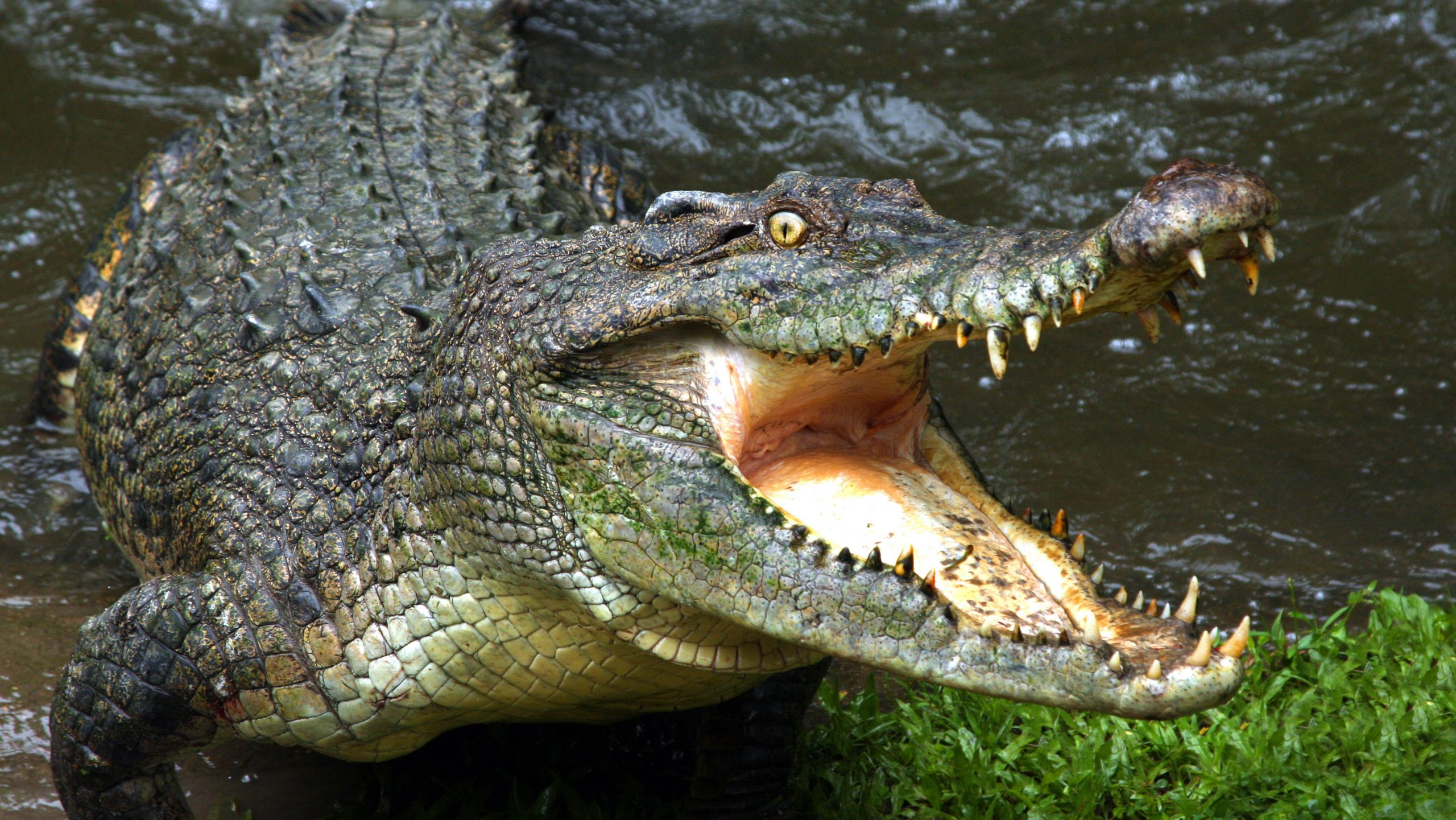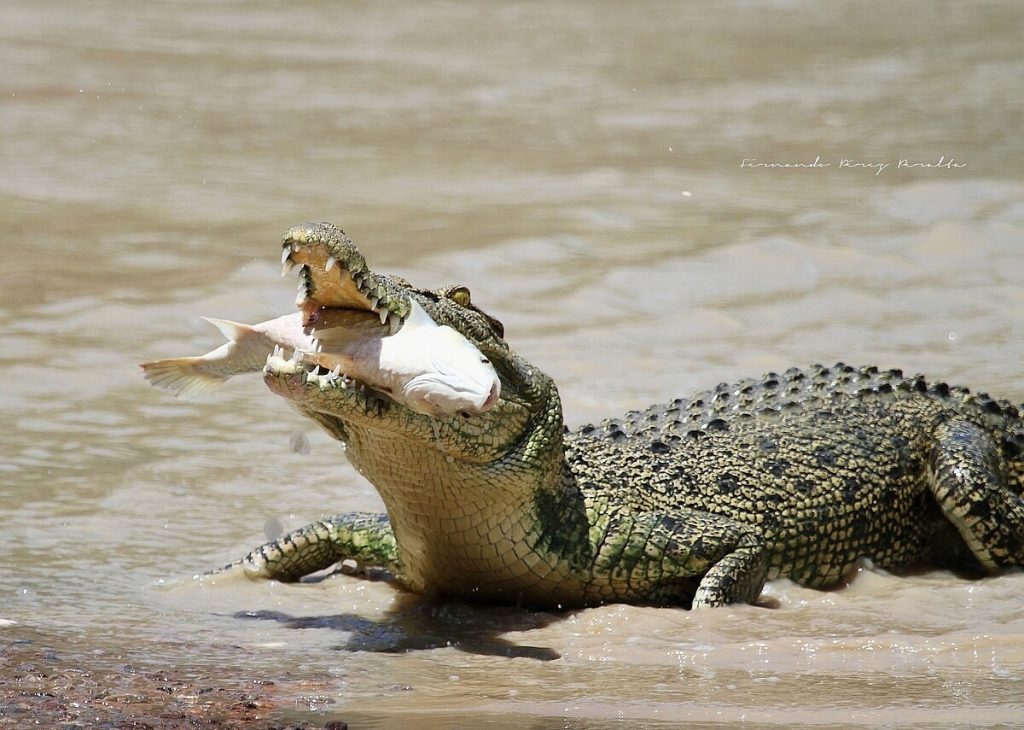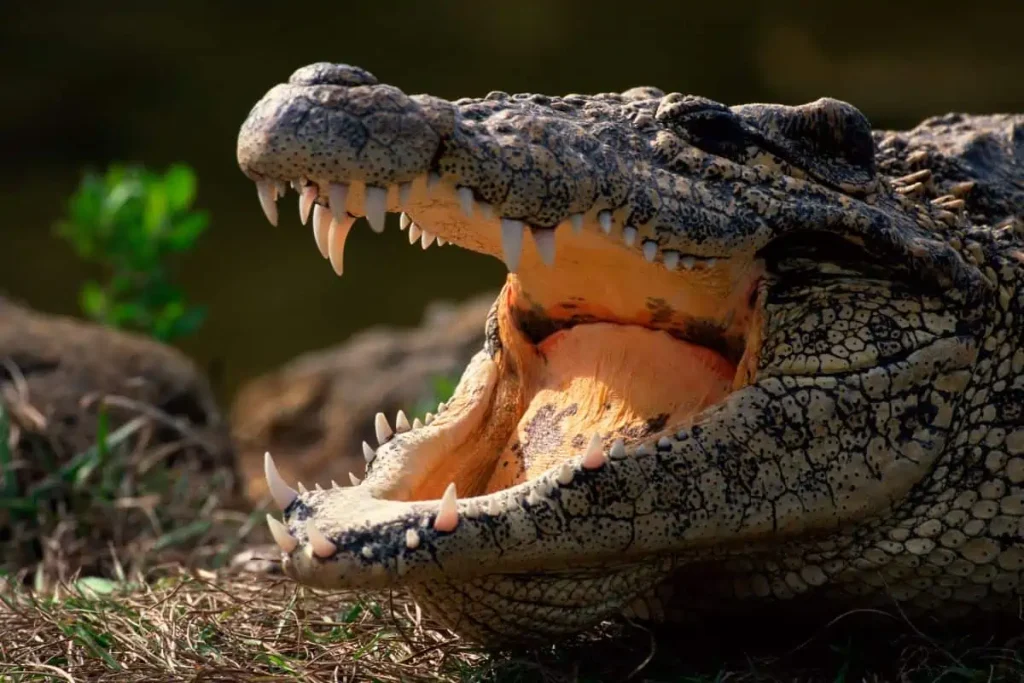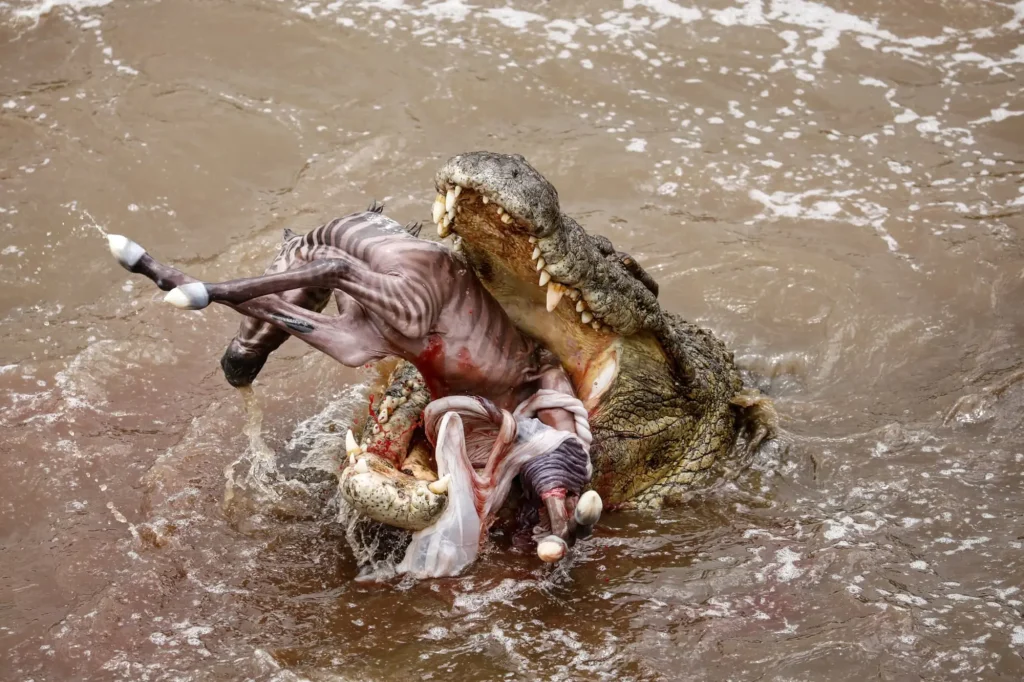
The river holds its breath. Eyes float like pebbles on a dark sheet of water. You lean over the gunwale, feel the cool spray, and meet the quiet that always comes before power. That is the moment Crocodile Bite Force stops being a number and becomes a feeling you will remember.
What the numbers really mean
Scientists have measured bite force in PSI. The saltwater crocodile hits about 3,700 PSI. The Nile crocodile, the star of African rivers, reaches roughly 3,000 to 3,500 PSI. Your jaw averages near 160 PSI while a German shepherd sits around 200 to 250 PSI. On the river, those comparisons fade. When a Nile crocodile locks on, you are looking at certainty.
How the jaw works
A crocodile’s skull is a clamp built for grip. Massive muscles close the jaws like a trap. Smaller muscles open them again, which is why handlers can hold a snout shut with tape, but cannot stop it from closing. Teeth are conical. They do not slice. They spear and hold. Pressure drives teeth into bone. Water finishes the rest.
The death roll
Once the jaws set, the body turns into a winch. The roll peels skin, breaks limbs, and rips free a portion large enough to swallow. It looks chaotic. It is method. The bite is the anchor. The roll is the blade.
Senses that make the strike possible
Those tiny bumps along the jaw are pressure sensors. They read ripples. A light toe touch sends a signal long before you see a head surface. Eyes, ears, and nostrils sit high on the skull. The crocodile watches while the rest of the body hides. Still water. Perfect cover.
Why crocodiles changed so little
Ambush, explosive power, and patience still win. A crocodile waits where prey must pass. Channels. Sand bars. Crossing points. It strikes when the angle is right, then lets the river help. The blueprint works. No rewrite needed.
You hear a slap of water. You see a tail whip. Then only ripples remain. Guides will tell you that silence is the part you remember.



Both rule their ranges. One is stronger on paper. One is more often encountered in African safari zones.
| Crocodile Species | Estimated Bite Force | Where to find them | Notable behavior |
| Nile crocodile | 3,000 to 3,500 PSI | Sub-Saharan Africa | Group hunting at choke points, frequent death rolls |
| Saltwater crocodile | About 3,700 PSI | Southeast Asia, Northern Australia | Solitary ambush near tidal mouths and estuaries |
Saltwater crocodiles win the lab test. Nile crocodiles win access. You meet them across major African rivers, lakes, and channels.
Habitat and range you will visit
You find Nile crocodiles in large rivers, floodplains, lakes, oxbows, and marsh edges. They haul out on sandbanks to warm, then slide back into deep runs. Common prey includes fish, antelope, warthog, waterbirds, young hippo, and carrion. During the Great migration crossings, they target anything that swims where current tightens.
Ask your guide to time outings for late afternoon when heat drops and banks grow busy again.
You want proximity with margin. Use these rules every time.
Ask your guide to stop with the sun behind you. It sharpens detail along the scales and jawline.
A responsible way to watch power
Good guiding keeps you close and safe. The best sightings happen when boats give space, engines idle low, and angles respect the animal. You get time to watch behavior, not a blur of water and wake.
What you feel when it happens
It starts with nothing. Still water. A heron calls. A warthog drinks. Then a thunderclap of spray and a shape where there was none. Your breath catches. Your hands tighten on the rail. The water closes. The bank goes quiet again. Power is rarely loud for long.
If you want to see Crocodile Bite Force with respect and safety, you need timing, patience, and a team that works the angles.
How strong is Crocodile Bite Force compared to big cats
A lion’s bite sits near 650 PSI. A Nile crocodile can reach 3,000 to 3,500 PSI. Power is not the whole story. Leverage, water, and grip finish the job.
Can a crocodile bite through bone
Yes. Conical teeth and massive pressure crack bone and hold fragments.
Why do they spin after biting
The death roll tears flesh and breaks limbs. It turns the body into a lever.
Are crocodiles fast on land
Short bursts only. They can lunge from the bank with shocking speed, then tire quickly.
How close can I safely get on a boat
With a pro guide, you can sit within a few meters in calm water. Current and behavior set the line. Listen and stay seated.
Do crocodiles hunt in groups
They do not plan like wolves, but they concentrate at choke points. The effect looks coordinated.
What does the open mouth basking mean
Heat dump. Not a staged threat. The bite remains one reflex away.
When is the best time to see a strike
Peak heat brings basking. Early morning and late afternoon bring movement. Crossings during migration are your best odds.
How big do Nile crocodiles get
Common adults run 10 to 15 feet. Exceptional males can pass 16 feet.
Do they attack boats
Rare with proper distance and calm behavior. Do not dangle hands or lean low over the side.
Crocodile Bite Force is not only a statistic. It is the cold grip that ends a struggle in seconds. On a good day, you sit close, feel the air tighten, and watch the river write a hard line under a long story. Our guides know where to wait and when to move. If you want that moment, we will put you in the right water at the right time. Bring a steady hand. The river will do the rest.

Lorem ipsum dolor sit amet, consectetur adipiscing elit. Ut elit tellus, luctus nec ullamcorper mattis, pulvinar dapibus leo.
GET A QUOTE
Get SEO metrics of any website or URL.

Explore Tanzania, Kenya, and Uganda in unmatched luxury.
Witness the Great Migration from exclusive viewpoints, relax in handpicked lodges, and savor gourmet dining under African skies.
From the Serengeti’s plains to Uganda’s gorilla highlands, every moment is curated for comfort and wonder.
Group Safaris
How we Work
Our Journeys
Flying Safaris
Conservation & Community
Contact Us
Honey Moon Safaris
Balloon Safaris
Family Safaris
Serengeti
Ngorongoro Crater
Maasai Mara
Bwindi Impenetrable
Volcanoes
Tarangire
Lake Nakuru
Kibale Forest
Lake Manyara
Arusha NP
Nairobi NP
About Friendly Safaris
How we Work
Our Journeys
The Team
Conservation & Community
Contact Us
Payment Details
Terms & Condition
FAQs
DMC
Start Planning